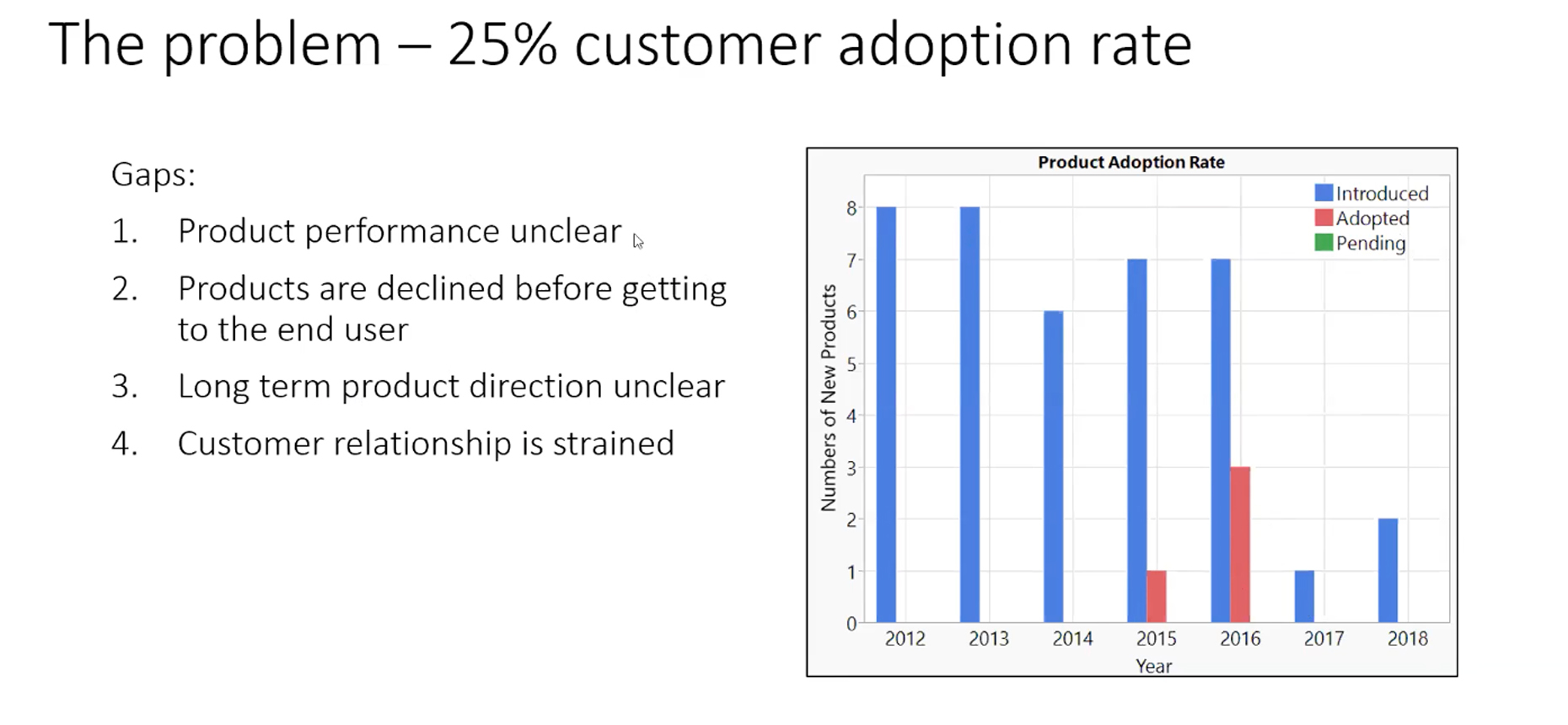In this webinar clip, Lindsay Patton, director of product for US Synthetic, a ChampionX company, shares how better aligning its strategy with its customers’ needs dramatically improved its new product success rate. Find a lightly edited transcript below.
The next thing we focused on was these products that we were developing that were making it to the manufacturing facility but then not making it out to the field. We realized there were three things we needed to improve to make that happen. The oil and gas industry is very dynamic. So, the needs of the field can change weekly, monthly, even daily. Our product design cycle is three months — we have one value-added process that takes a month. So, even if we were to remove all waste, we’d still be at about a month and a half [lead time].
1. Align Strategy with Customer Needs
One way to align the strategy was just to write something down, to make sure that when we’re launching a new product development project, we have shared alignment that is written down. The way we did this is [using] something we call the Design-Intent Document.
There are a few key things about this document. [First], we need to have a primary project contact; that is, a customer contact who can feel responsible and ownership of the work and also change the product scope at any moment. [We need] clear deliverables. And this [requires] a lot of conversation back and forth of, Is this the output you need? What is the output you need? Not the pathway: sometimes, our customers have a tendency to say, I need more abrasion, but when you dive into it, it’s clear that what they actually need is less cracking, and those are different things.
Next, [we need] clearly defined needs versus wants. So, what are the needs-to-have versus nice-to-haves? And then, [we need] the targeted price point; we always talk about price upfront.
Some other key things — and our marketing department helped me with this — are making the content short at the top [beginning of the document], longer below and having a lot of white space on your one-page document.
2. Align Testing Techniques with Our Customers’
The other point of misalignment we found is that we were both using the same test to qualify our cutters. It’s a very standard test used in our industry. It’s called a VTL. Some people call it a horizontal boring test, but all it is is a spinning rock, which we take one cutter and abrade away that rock. And we develop our trade-off curves off this test. What we found is that often we would develop a product on our test, and we’d say, this is high abrasion. But when we sent it to our customer’s testing facility —they had the same test — it would come back as a low-abrasion product. So, there was some sort of misalignment between our tests. And digging into this further, we discovered we were just using different test parameters, and tests are very sensitive to the settings that you input onto them.
So, we just asked our customer if they’d be willing to share with us their test parameters, which they were happy to do. And we started using their method. And from that point on, when we said This is high abrasion on our test, we knew that when we sent it to their test, it would also be high abrasion. And that was very consistent.
One other thing we did regarding aligning the way we spoke [with the customer] is we started matching our customer’s report style. We had different reports. So every time in a product introduction, [when] I’m showing them a graph, it [might take] additional time for their memory or their brain to pick up what is this new graph [is saying]. And really, there’s no reason why I can’t just use the style they prefer and eliminate any confusion.
3. Share Our Strategy
And then finally, it’s always important to share the strategy. When we design a product, we design it for a specific area or a specific application. So we need to clearly communicate this to not only the manufacturing center but also the distribution centers. And this is an even more simple document. We try to have very few words on it, a lot of white space, and pictures are always a plus.





